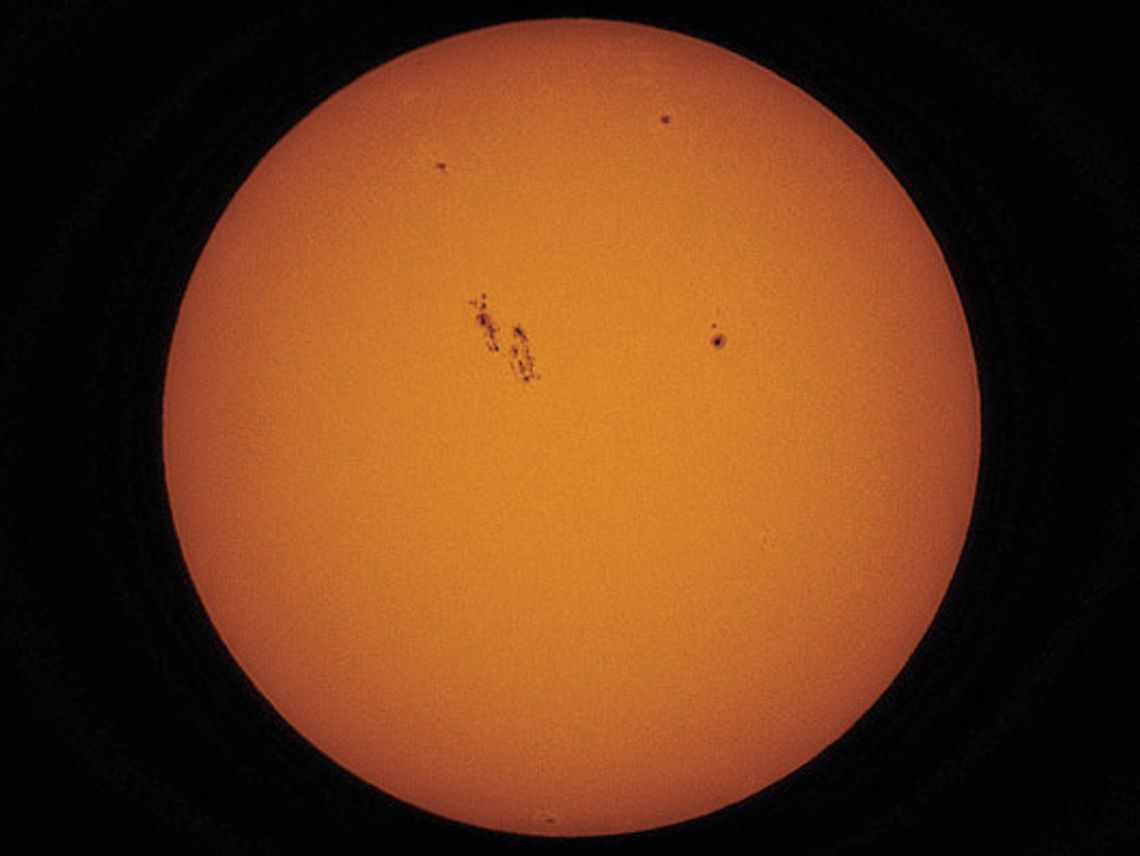Well, we’re a week ahead of the eclipse. Now the important question, what do we do with all those eclipse glasses afterwards? Hahaha.
My advice is to put them away for the next partial solar eclipse which happens far more frequently than the total solar eclipse. If, like most folks, you have disposable paper glasses, we can all give them a second life beyond April’s eclipse.
Why not donate them to your local school, library, church, or an organization like Astronomers Without Borders (astronomerswithoutborders.org). They would love to have your gently used eclipse glasses.
If your glasses somehow get damaged, the filters themselves are not recyclable so these can be discarded with your standard trash.
You can also monitor the sun’s activity using your eclipse glasses. Sometimes there is a Jupiter-sized or larger grouping that you can see without a telescope using your eclipse glasses. You can see the day’s sunspot activity at spaceweather.com.
Sunspots appear as temporary dark spots on the sun’s surface, or photosphere. These regions are cooler than their surroundings which is why they appear darker.
Despite their relative coolness, sunspots are still extremely hot, with temperatures around 6,500 degrees Fahrenheit. They form in areas where strong magnetic fields interfere with the sun’s heat from reaching the surface. I took this photo on March 21 of several sunspots, practicing for the big event on April 8.
If any of my readers subscribe to Sky & Telescope magazine (and why wouldn’t you?), there is a five-page review of the imaging telescope I principally use for the photos accompanying my Boerne Star articles. It’s a Unistellar eQuinox, first generation. The article is about using the eQuinox second generation.
With the new generation of smart telescopes, it’s easy to learn about the night sky. Anyone with a passing interest in the night sky can amaze themselves, and their friends, with these nearly completely automatic wonders. Their website is Unistellar.com.
Another very good smart telescope company is Vaonis, at Vaonis.com. I have a Vaonis Vespera Pro on order. Both are French companies and started out as Kickstarter campaigns.
The French government highly subsidizes high-tech startups. Celestron, a longtime American company based in California, is now rolling out its first smart telescope, called Origin.
Some things to look for in April skies:
— If you have a clear east-southeast horizon on the morning of April 6, you can spot a thin crescent moon, Saturn just above it, and Mars just above Saturn and to the right, to the south.
Begin looking about 30 minutes before sunrise. Naked eye or low power binoculars are all that’s needed.
— Now let’s see if you’ve been paying attention. What is the date of the new moon? April 8. What is the date of the total solar eclipse? April 8. A total solar eclipse can ONLY take place when the moon is new.
— On April 8 during the total solar eclipse, in the 4 minutes of totality and without your eclipse glasses on, you should be able to see Jupiter and Venus on opposite sides of the sun.
Between Jupiter and the sun, you also might be able to see comet 12P/Pons-Brooks. Imagine seeing a comet in daylight. Also, I’ve NEVER seen Venus nearly directly overhead, and in daylight.
%20Uploads/Boerne%20-%20Jack%20Estes%20Night%20Skies.jpg)
— If you have a clear western horizon on the evening of April 10, you can see Jupiter with a thin crescent moon just above and to the right of Jupiter.
You should look about 45 minutes after sunset. Mighty Jupiter will be leaving our night’s sky to become a morning object for several months.
— The next full moon is April 22-25 for all practical purposes. The actual full moon is April 23 but, because of geometry, we get a longer period of full moon twice a year, near the spring and fall equinoxes.
Jack Estes is an Astronomical League Master Observer and Astronomical League Herschel 400 coordinator.







Comment
Comments